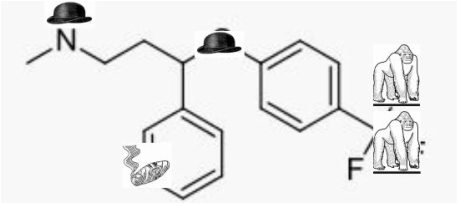Dr. Kovacs’ work on nairobi-3 continued until his untimely death, in 1962, in an automobile accident. At the time there was widespread suspicion that Dr. Kovacs’ “accident” was an assassination by the pharmaceutical industry, which was concerned that, once perfected, nairobi-3 would obviate any need on the depressed public’s part for prescription remedies. There has never been any confirmation of those rumors.
With the death of Dr. Kovacs, research on nairobi-3 ceased until 1972, when nairobi-3 was revisited by Dr. Harry Edward Nilsson III. Taking the basic A/V articulation developed by Dr. Kovacs, Dr. Nilsson found that the addition of lime (CaO) to the Kovacs formulation eliminated the problematical side effects of nairobi-3, which included OMR (obsessive melody retention) and nightmares (experienced mostly by patients under 10 years old).
When tests of Dr. Nilsson’s new formulation, lime-ND, were conducted (using DNg A-ling as the placebo) it was found that lime-ND
By this time, of course, the pharmaceutical industry had solidified its grip on anti-depressant development and Dr. Nilsson prudently kept his research into psychotropic A/V articulation low-key and under drug companies’ radar. Nevertheless, in 1994 Dr. Nilsson too, like Dr. Kovacs, met an untimely death.
While there is no evidence whatsoever that anyone in the pharmaceutical industry engineered Dr. Nilsson’s congestive cardiac failure, it was noted by activists in the beleaguered A/V anti-depressant field that the price of Eli Lilly & Co. shares shot up after the announcement of Dr. Nilsson’s death – “inexplicably,” according to the Wall Street Journal.
Someday, the groundbreaking accomplishments of Drs. Kovacs and Nilsson in fighting depression will be hailed by the psychiatric establishment. Perhaps, thanks to technological advances and 21st century experiments in molecular harmony, someone even will find a way to improve on Dr. Nilsson’s refinement of Dr. Kovacs’ original stroke of genius. Perhaps, but it is hard to imagine.

 RSS Feed
RSS Feed